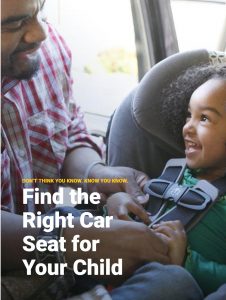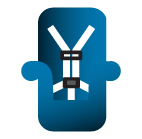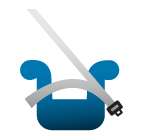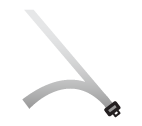 Overview
Overview
Car seats and boosters provide protection for infants and children in a crash, yet car crashes are a leading cause of death for children ages 1 to 13. That's why it's so important to choose and use the right car seat correctly every time your child is in the car. Follow these important steps to choose the right seat, install it correctly, and keep your child safe.
FIND THE RIGHT CAR SEAT
The Process
Follow these steps to help you through the process of finding the right car seat, installing it correctly, and keeping your child safe.
Find the right car seat
- Learn about the four car seat types
- Follow NHTSA’s car seat recommendations based on your child’s age and size
- Find and compare car seats and ease-of-use-ratings using NHTSA’s Car Seat Finder
Install your car seat correctly
- Understand the parts and tips used for installation
- Follow our detailed car seat installation instructions and videos
- Get your car seat inspected at a station nearest you
Keep your child safe in a car seat
- Register your car seat and sign up for recall notices to receive safety updates
Car Seat Types
Learn about the four types of car seats, while keeping in mind the following tips:
- As children grow, how they sit in your car will change. Make sure you use a car seat that fits your child’s current size and age.
- Not all car seats fit in all vehicles. Make sure the car seat is the right fit for your vehicle. Test the car seat you plan to buy to make sure it fits well in your vehicle.
- Buy a car seat that can be installed and used correctly every time.
Rear-Facing Car Seat

The best seat for your young child to use. It has a harness and, in a crash, cradles and moves with your child to reduce the stress to the child's fragile neck and spinal cord.
Types
- Infant Car Seat (Rear-Facing only): Designed for newborns and small babies, the infant-only car seat is a small, portable seat that can only be used rear-facing. Babies usually outgrow their infant car seats by 8 or 9 months. When that happens, we recommend that parents purchase a convertible or all-in-one car seat and use it rear-facing.
- Convertible Seat: As a child grows, this seat can change from a rear-facing seat to a forward-facing seat with a harness and tether. Because it can be used with children of various sizes, it allows for children to stay in the rear-facing position longer.
- All-in-One Seat: This seat can change from a rear-facing seat to a forward-facing seat (with a harness and tether) and to a booster seat as a child grows. Because it can be used with children of various sizes, it allows for children to stay in the rear-facing position longer.
Forward-Facing Car Seat

Has a harness and tether that limits your child's forward movement during a crash.
Types
- Convertible Seat: As a child grows, this seat can change from a rear-facing seat to a forward-facing seat with a harness and tether.
- Combination Seat: As a child grows, this seat transitions from a forward-facing seat with a harness and tether into a booster.
- All-in-One Seat: This seat can change from a rear-facing seat to a forward-facing seat (with a harness and tether) and to a booster seat as a child grows.
Booster Seat

Positions the seat belt so that it fits properly over the stronger parts of your child's body.
Types
- Booster Seat With High Back: This type of booster seat is designed to boost the child’s height so the seat belt fits properly. It also provides neck and head support and is ideal for vehicles that don’t have head rests or high seat backs.
- Backless Booster Seat: A backless booster seat is designed to boost the child’s height so the seat belt fits properly. It does not provide head and neck support. It is ideal for vehicles that have head rests.
- Combination Seat: As a child grows, this seat transitions from a forward-facing seat with a harness into a booster.
- All-in-One Seat: This seat can change from a rear-facing seat to a forward-facing seat (with a harness and tether) and to a booster seat as a child grows.
Seat Belt

Should lie across the upper thighs and be snug across the shoulder and chest to restrain your child safely in a crash. It should not rest on the stomach area or across the neck or face.
Post from the website: https://www.nhtsa.gov/equipment/car-seats-and-booster-seats?stat=530963&socialnet=facebook


You must be logged in to post a comment.